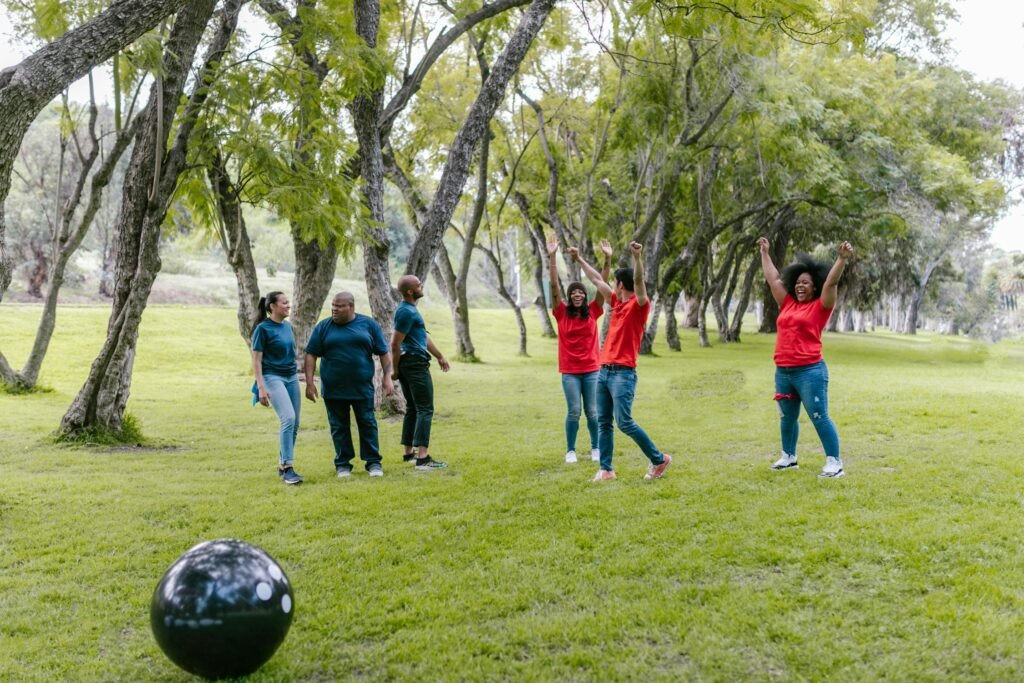Introduction Of Community Health Assessment RFP
Health needs assessment plays a vital part and is an instrumental process for defining the health needs or the difficulties that a particular population face. These assessments help in mapping out the health needs in a society, and budgetary provisions for championing various health goals, initiatives as well as empirical research. A community health assessment RFP serves as a vital tool for organizations to obtain detailed plans from contractors or partner organizations that conduct assessments. This article provides a comprehensive understanding of community health assessment RFPs, explains their importance, outlines their key components, and offers recommendations for creating an effective RFP.

What does Community Health Assessment RFP stand for?
Definition and Purpose
A CHA is a regular, purposeful, and documented process that involves the identification, acquisition, analysis, and synthesis of data on health problems and requirements for change in the community. A CHA identifies the leading health issues that need to be addressed when planning and proposing health interventions.
Importance of CHAs
Public health cannot exist without CHAs. They afford a swift look at health problems within a specified community and the areas that need attention. This aspect makes it easier to design health initiatives in a way that reflects actual needs rather than assumptions; thus, efforts are not wasted in the process.
The purpose of this systematic review is to ground participants’ comprehension of RFPs in the therapeutic context of CHAs.
What does stand for RFP?
About the CHAs, an RFP outlines the nature of the assessment, specifies the expected returns, sets the time frame, and describes how to evaluate the best proposal.
RFP for a CHA That Follows
An RFP concerning a community health assessment aims at eliminating bias when choosing a contractor while at the same time creating competition. It enables organizations to view several bids and conduct contractor scrutiny to identify a suitable contractor to hire depending on the contractor’s capability, strategy, and cost.
The components of a Community Health Assessment RFP
Executive Summary
The executive summary section gives the reader a brief glimpse of the whole RFP with the background of the CHA, the Issuing Organization, and the expected results. It provides the general background that will lead up to the more specific areas that are outlined in the later portions of the paper.
Scope of Work
The project description defines the primary operational tasks, the results of which the contractor will provide to the client. This may comprise data gathering and assessment, canvassing amongst the community,_focus group discussions, interviews with stakeholders, and the preparation of the last report inclusive of recommendations.
Project Timeline
The timeline of the project also offers a chronological progression schedule of the CHA and other important points of concern. This helps in clearly defining the expected duration of the assessment for the issuing organization as well as the contractor that is going to be used.
Budget
The budget section describes the conduct’s financial specifications. It includes overall financial resources that are usable and any special financial requisites and restrictions. This usually includes at least three cost break-up proposals, often in the form of a budget plan in the contractors’ bid.
Evaluation Criteria
This section identifies the measures used to assess proposals. Typical parameters include the contractor’s competence, the characteristics of the proposed method, the realism of the schedule, and the practicality of the proposed prices.

Community Health Assessment RPF for development
When aiming for scholarly focus in your writing, it makes sense that language should be free from ambiguity, and should be clear & specific.
Flexibility is not as important when creating an RFP. Follow the guidelines set for every part of the manuscript, and make sure that expectations of required outputs are stated plainly are stated explicitly. Forbade the usage of weak categorization that may lead to confusion.
Offer Much Background Information
Giving more context information, the potential contractors will be able to come up with a more suitable offer. Enumerate impressions of the community, previous findings any new assessments, and current or special health issues.
Set Realistic Timelines
Make sure that the proposed time frame for the project is realistic. Allocate sufficient time for each step of the assessment, data gathering, and report writing. Provide realistic time estimates for community engagement processes, including surveys and focus group discussions.
Is to set up a reasonable budget.
Ensure that there is some sort of projected budget for the project and if there are any limitations to funding. To do this, it is important to guarantee that all the costs related to the assessment are within the provided budget, ranging from the collection of data to the analysis of the data collected and the preparation of the report.
Be Obedient to a Clear Method of Assessment
List the criteria for selecting proposals and assign a weight to each one. This level of transparency helps potential contractors understand what matters most to your organization and how you will evaluate the submitted offers.
Hold Their Questions and Clarifications

Entertain questions from potential contractors during the formulation of proposals for the construction work to be performed. This helps all the parties to be fully aware of the requirements of the RFP so that they can present sound proposals.
There is a hypothesis that the following non-executive directors have developed the best practices for efficient CHAs:
Involve Stakeholders Early
Involve stakeholders who are of importance to the project from the early stages. These are the community members, health practitioners, and officials from organizations that are involved in handling such issues. Hence, their contribution and support are instrumental in the accomplishment of the assessment goals.
Thus, to support the second hypothesis, the study will utilize multiple sources of data.
As important as it is to use a wide range of sources to acquire data, it is equally crucial to avoid the potential for misleading simplifications of the issue. Therefore, this approach involves not only measuring data using numbers from health records but also incorporating information gathered through questionnaires, interviews, and focus group discussions. Consequently, utilizing diverse data sources ensures a more comprehensive and accurate assessment.
Communicate Findings Clearly
Provide the assessment results in a simple and understandable format. It is also important When presenting complicated data to use charts and graphs to better highlight key points and develop a final report that both technical and non-technical audiences can read and understand.
Develop Actionable Recommendations
Make sure that, with the issuance of the CHA recommendations, they are not only clear but also executable. Consequently, this supports organizations and community stakeholders in adopting proper strategies that effectively address the identified health needs and related challenges.
Conclusion
Developing a detailed and efficient community health assessment RFP is one of the primary activities of analyzing and responding to the challenges of community health. Even though risk management is crucial for managing independent contractors, organizations can achieve their goals by ensuring that they create detailed, fact-filled, and realistic RFPs.Besides, these assessments assist in the strategic development of health goals, needs, and resource provision and thus enhance the health of those within the community.
FAQs
CHA stands for;
A CHA means a systematic approach of gathering, analyzing, and making sense of health needs and matters within a particular community to the provision of health solutions.
In relation to conducting a CHA, why is it essential to have an RFP?
The selection of a contractor for the CHA through an RFP also helps in having clear communication and competition among organizations and enables them to choose the best contractor out of all the proposals, the contractor who can provide the best and the most cost-efficient solution.
A CHA RFP should contain what?
The CHA RFP should provide potential contractors with adequate information, including an executive resume, background details, the scope of work, the time frame, the budget, and the evaluation standards.
What must organizations do to guarantee a positive outcome to a CHA?
The following are ways that organizations can employ to make CHA successful; Early engagement of the stakeholders, use of multiple sources of data, clear presentation of the findings, and lastly, the development of practical use of results founded on the CHA.
What are the frequent problems faced while undertaking CHAs?
Common challenges in implementing CHAs include managing data procedures, mobilizing the community, and processing and assessing data. Addressing these issues requires specific skills and proactive management.
